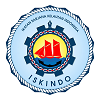Kepadatan dan Laju Pertumbuhan Bulu Babi (Tripneustes gratilla) di Perairan Letman, Kabupaten Maluku Tenggara
Abstract
ABSTRAK
Aktivitas penangkapan biota padang lamun khususnya terhadap bulu babi cenderung ke arah penangkapan berlebih (over fishing). Pengambilan bulu babi di alam terus dilakukan tanpa mempertimbangkan aspek kelestariannya, sehingga ada kecenderungan populasi bulu babi tersebut menurun secara drastis dari tahun ke tahun. Penurunan stok bulu babi di alam akan semakin cepat jika tingkat eksploitasinya lebih sering dilakukan, karena penambahan individu baru (recruitment) dari populasi tersebut tidak sebanding dengan hasil tangkapan. Diperkirakan tingkat eksploitasi sumberdaya tersebut di alam telah melebihi batas yang diperbolehkan (over exploitation). Tujuan penelitian antara lain mengetahui dan menganalisis kepadatan dan laju pertumbuhan bulu babi (T. gratilla). Penelitian dilakukan di pesisir perairan Letman, Kepulauan Kei Kecil selama bulan September sampai November 2022 dengan dua kali pengambilan sampel setiap bulannya. Sampel bulu babi diperoleh dari hasil pengambilan sampel menggunakan metode belt transek pada saat air surut dan dipasang tegak lurus garis pantai ke arah laut. Kepadatan bulu babi di perairan Letman tergolong rendah dengan distribusi tidak merata terkait kedalaman dan tutupan lamun. diameter bulu babi yang tertangkap berkisar antara 1.7-8.8 cm dengan ukuran rata-rata 5.2 cm. Hasil analisis menunjukan bahwa pertumbuhan bulu babi bersifat allometrik negatif, lambat dan diameter infinitif kecil.
Kata kunci: kepadatan, laju pertumbuhan, bulu babi
ABSTARCT
Fishing activities for seagrass biota, especially for sea urchins, tend to be over-fishing. Sea urchins are collected from nature without considering the aspect of sustainability, so there is a tendency for the sea urchin population to decrease drastically from year to year. The decline in sea urchin stocks in nature will accelerate if the level of exploitation is more frequent, because the addition of new individuals (recruitment) from the population is not proportional to the catch. It is estimated that the level of exploitation of these resources in nature has exceeded the permissible limits (over exploitation). The aims of the research included knowing and analyzing the density and growth rate of sea urchins (T. gratilla). The research is planned to be carried out in the coastal waters of Letman, Kei Kecil Islands from September to November 2022 with two samplings per month. Sea urchin samples were obtained from the results of sampling using the belt transect method at low tide and installed perpendicular to the shoreline towards the sea. The density of sea urchins in Letman waters is low with an uneven distribution regarding seagrass depth and cover. The diameter of the sea urchins caught ranged from 1.7-8.8 cm with an average size of 5.2 cm. The results of the analysis showed that the growth of sea urchins was negative allometric, slow and small infinitive diameter.
Keywords: density, growth rate, sea urchins
Full Text:
PDF (Bahasa Indonesia)References
Andrew KNL, Agatsuma Y, Ballesteros E, Bazhin AG, Creaser EP, Barnes DKA, Botsford LW, Bradbury A., Campbell A, Dixon JD, Einarsson S, Gerring P, Bebert K, Hunter M, Hur SB, Johnson CR, Juinio-Menez MA, Kalvass P, Miller RJ, Moreno CA, Palleiro JS, Rivas D, Robinson SML, Schroeter SC, Steneck RS, Vadas RL, Woodby DA, Xiaoqi Z. (2002). Status and management of world sea urchin fisheries. Oceanography and Marine Biology Annual Review 40, 343–425.
Baruadi, A. S. R., & Nane, L. (2020). Edukasi Pemanfaatan Bulu-Babi (Sea Urchin) Melalui Budi Daya Keramba Jaring Apung. Jurdimas Royal, 3(2), 169-174.
Bhattacharya, C. G. (1967). A simple method of resolution of a distribution into Gaussian components. Biometrics, 23, 115-135.
Byrne, M. (2010). Impact of climate change stressors on marine invertebrate life histories with a focus on the Mollusca and Echinodermata. In: Yu J, Henderson- Sellers A, eds. Climate alert: Climate change monitoring and strategy. Sydney:
University of Sydney Press. pp 142–185.
Cahyani, N. F. D., & Hartoko, A. (2013). Sebaran Dan Jenis Lamun Pantai Pancuran Belakang Pulau Karimunjawa, Taman Nasional Karimunjawa, Jepara. Management of Aquatic Resources Journal (MAQUARES), 3(1), 61-70.
Clark, D., Lamare, M., dan Barker, M. (2009). Response of sea urchin pluteus larvae (Echinodermata: Echinoidea) to reduced seawater pH: a comparison among a tropical, temperate, and a polar species. Marine Biology, 156, 1125-1137. DOI 10.1007/s00227-009-1155–8.
Drouin, G., Himmelman, J. H., & Béland, P. (1985). Impact of tidal salinity fluctuations on echinoderm and mollusc populations. Canadian Journal of Zoology, 63(6), 1377-1387.
Froese, R. (2006). Cube law, condition factor and weight–length relationships: history, meta‐analysis and recommendations. Journal of applied ichthyology, 22(4), 241-253.
Hartati, R., Pratikto, I., & Pratiwi, T. N. (2017). Biomassa dan estimasi simpanan karbon pada ekosistem padang lamun di Pulau Menjangan Kecil dan Pulau Sintok, Kepulauan Karimunjawa. Buletin Oseanografi Marina, 6(1), 74-81.
Jennings, S., Kaiser, M.J., Reynolds, J.D. (2001). Marine fishery ecology. Blackwell Sciences, Oxford, 432pp.
Juinio-Menez, M. A., Bangi, H. G., Malay, M. C., & Pastor, D. (2008). Enhancing the recovery of depleted Tripneustes gratilla stocks through grow-out culture and restocking. Reviews in Fisheries Science, 16(1-3), 35-43.
King, M. (1995). Fisheries Biology, Assessment and Management. United kingdom:fishing news book. 341 p.
Lanyon, J. (1986). Guide to Identification of Seagrass in The Great Barrier Reef Region. Australia (AU). Great Barrier Reef Marine Park Authority.
Lewerissa, Y. A., & Kalay, D. E. (2020). Potensi Ekologi Bulu Babi di Pelita Jaya dan Pulau Osi Kabupaten Seram Bagian Barat. Agrikan: Jurnal Agribisnis Perikanan, 13(1), 46-53.
Miranto A. Efrizal T, Zen WL. (2013). Tingkat kepadatan kepiting bakau disekitar hutan mangrove di Kelurahan Tembeling, Kecamatan Teluk Bintan, Kepulauan Riau. [Thesis]. Universitas Maritim Raja Ali Haji.
O'Connor, M. I., Bruno, J. F., Gaines, S. D., Halpern, B. S., Lester, S. E., Kinlan, B. P., & Weiss, J. M. (2007). Temperature control of larval dispersal and the implications for marine ecology, evolution, and conservation. Proceedings of the National Academy of Sciences, 104(4), 1266-1271.
Radjab A. W. (2004). Sebaran dan Kepadatan Bulu Babi Di Perairan Kepulauan Padaido Biak Irian Jaya. Prosiding Seminar Laut Nasional III. Ikatan Sarjana Oseanologi Indonesia. Jakarta.
Radjab, A. W., Khouw, A. S., Mosse, J. W., & Uneputty, P. A. (2010). Pengaruh pemberian pakan terhadap pertumbuhan dan reproduksi bulu babi (Tripneustes gratilla L) di Laboratorium. Oseanologi dan Limnologi di Indonesia, 36(2), 243-258.
Roller, R. A., & Stickle, W. B. (1993). Effects of temperature and salinity acclimation of adults on larval survival, physiology, and early development of Lytechinus variegatus (Echinodermata: Echinoidea). Marine Biology, 116, 583-591.
Setyawan, N. M. (2014). Dinamika Populasi Bulu Babi (Tripneustes gratilla Linnaeus 1758) di Perairan Pantai Semerang, Lombon Timur. Sekolah Pascasarjana Institut Pertanian Bogor (Tesis).
–591.
Silaban, R., Silubun, D. T., & Jamlean, A. A. R. (2021). Aspek Ekologi Dan Pertumbuhan Kerang Bulu (Anadara antiquata) Di Perairan Letman, Kabupaten Maluku Tenggara. Jurnal Kelautan: Indonesian Journal of Marine Science and Technology, 14(2), 120-131.
Suriani, S, Latumahina, B.M, Hitalessy, R.B, La Eddy. (2020). Hubungan Populasi Makroalga (Padina sp) dengan Bulu babi (Tripneustes gratilla) di Perairan Pantai Desa Titawaai Kabupaten Maluku Tengah. Jurnal Riset Perikanan dan Kelautan, 2(1), 165-175.
Syam, A. R., & Andamari, R. (2017). Populasi dan tingkat pemanfaatan bulu babi (echinoidea) di padang lamun Pulau Osi, Seram Barat, Maluku Tengah. Jurnal Penelitian Perikanan Indonesia, 8(4), 31-37.
Uneputty, P. A., Pattikawa J. A. dan Rijoly, F. (2016). Status Populasi Bulu Babi Tripneustes gratilla di Perairan Desa Liang, Pulau Ambon. Omni-Akuatika, 12(3) 98 – 105.
Vaitilingon, D., Rasolofonirina, R., Jangoux, M. (2005). Reproductive cycle of edible echinoderms from the south-western Indian Ocean I Tripneustes gratilla L (Echinoidea, Echinodermata) Western Indian Ocean. Journal Marine Science, 4(1), 47-60.
Wicaksono, S. G., Widianingsih, W., & Hartati, S. T. (2012). Struktur vegetasi dan kerapatan jenis lamun di perairan Kepulauan Karimunjawa Kabupaten Jepara. Journal of Marine Research, 1(2), 1-7.
DOI: https://doi.org/10.21107/jk.v16i2.19152
Refbacks
- There are currently no refbacks.

This work is licensed under a Creative Commons Attribution 4.0 International License.

Jurnal Kelautan by Program Studi Ilmu Kelautan is licensed under a Creative Commons Attribution 4.0 International License.
Published by: Department of Marine Sciences, Trunojoyo University of Madura













